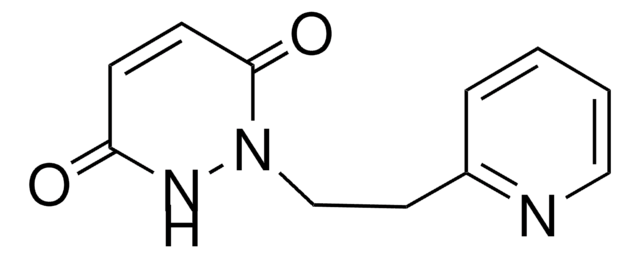General description
We are committed to bringing you greener alternative products, which adhere to one or more of The 12 Principles of Green Chemistry.This antibody is Preservative-free, produced without the harm or sacrifice of animals and exceptionally stable to allow for ambient shipping and storage if needed and thus aligns with "Waste Prevention", "Designing Safer Chemicals" and "Design for Energy Efficiency".
Click here for more information.
ZooMAb® antibodies represent an entirely new generation of recombinant monoclonal antibodies.Each ZooMAb® antibody is manufactured using our proprietary recombinant expression system, purified to homogeneity, and precisely dispensed to produce robust and highly reproducible lot-to-lot consistency. Only top-performing clones are released for use by researchers. Each antibody is validated for high specificity and affinity across multiple applications, including its most commonly used application. ZooMAb® antibodies are reliably available and ready to ship when you need them.
Specificity
Clone 1M14 is a ZooMAb® Rabbit recombinant monoclonal antibody that specifically detects Myristoylated alanine-rich C-kinase substrate (MARCKS). It targets an epitope within 20 amino acids from the C-terminal half.
Immunogen
KLH-conjugated linear peptide corresponding to 20 amino acids from the C-terminal half of human Myristoylated alanine-rich C-kinase substrate (MARCKS).
Application
Quality Control Testing
Evaluated by Western Blotting in Human Brain tissue lysate.
Western Blotting Analysis: A 1:10,000 dilution of this antibody detected MARCKS in Human brain tissue lysate.
Tested Applications
Immunohistochemistry (Paraffin) Analysis: A 1:1,000 dilution from a representative lot detected MARCKS in Human cerebral cortex tissue sections.
Affinity Binding Assay: A representative lot of this antibody bound MARCKS peptide with a KD of 4.8 x 10-7 in an affinity binding assay.
Note: Actual optimal working dilutions must be determined by end user as specimens, and experimental conditions may vary with the end user.
Target description
Myristoylated alanine-rich C-kinase substrate (UniProt: P29966; also known as MARCKS, Protein kinase C substrate 80 kDa protein light chain, 80K-L protein, PKCSL) is encoded by the MARCKS (also known as MACS, PRKCSL) gene (Gene ID: 4082) in human. MARCKS is the most prominent cellular substrate for protein kinase C (PKC). It is also reported to serve as a substrate for the lipid-activated PKC-related kinase (PRK1). PRK1 phosphorylates MARCKS on the same sites as PKC in vitro. MARCKS is ubiquitously expressed and is highly conserved among vertebrates. It is shown to bind calmodulin, actin, and synapsin. It has three highly conserved functional domains. In the center region it has the effector domain (ED; aa 152-176) and that is rich in positively charged lysine residues. Multiple serine residues in this region make it susceptible to phosphorylation by PKC. Adjacent to the ED are two highly conserved regions: the MARCKS Homology 2 (MH2) domain and N-terminal domain that containing a myristoylation site, which undergoes a reversible co-translational attachment of myristic acid to its N-terminal glycine residue (residue 2). In a non-phosphorylated state and in the absence of calcium-calmodulin binding, the positively-charged ED is shown to attach to the negatively charged cytosolic face of the plasma membrane. This results in the N-terminal myristoylation site to be reversibly inserted into the plasma membrane. Upon phosphorylation of ED, it loses its affinity for the plasma membrane and MARCKS translocates back into the cytoplasm. MARCKS is essential for postnatal survival. It is involved in a wide range of functions that range from embryonic development to adult brain plasticity and the inflammatory response. It also plays a role in neuronal migration, neurite outgrowth, neurotransmitter release, and synaptic plasticity. This ZooMAb® recombinant monoclonal antibody, generated by our propriety technology, offers significantly enhanced specificity, affinity, reproducibility, and stability over conventional monoclonals. (Ref.: El Amri, M., et al. (2018). J. Biomed. Sci. 25; Article 43; Palmer, RH., et al. (1996). FEBS Lett. 378(3); 281-285).
Physical form
Purified recombinant rabbit monoclonal antibody IgG, lyophilized in PBS with 5% Trehalose, normal appearance a coarse or translucent resin. The PBS/trehalose components in the ZooMAb formulation can have the appearance of a semi-solid (bead like gel) after lyophilization. This is a normal phenomenon. Please follow the recommended reconstitution procedure in the data sheet to dissolve the semi-solid, bead-like, gel-appearing material. The resulting antibody solution is completely stable and functional as proven by full functional testing. Contains no biocide or preservatives, such as azide, or any animal by-products. Larger pack sizes provided as multiples of 25 µL.
Reconstitution
0.3 mg/mL after reconstitution at 25 µL per vial. Please refer to guidance on suggested starting dilutions and/or titers per application and sample type.
Storage and Stability
Recommend storage of lyophilized product at 2-8°C; Before reconstitution, micro-centrifuge vials briefly to spin down material to bottom of the vial; Reconstitute each vial by adding 25 µL of filtered lab grade water or PBS; Reconstituted antibodies can be stored at 2-8°C, or -20°C for long term storage. Avoid repeated freeze-thaws.
Legal Information
ZooMAb is a registered trademark of Merck KGaA, Darmstadt, Germany
Disclaimer
Unless otherwise stated in our catalog or other company documentation accompanying the product(s), our products are intended for research use only and are not to be used for any other purpose, which includes but is not limited to, unauthorized commercial uses, in vitro diagnostic uses, ex vivo or in vivo therapeutic uses or any type of consumption or application to humans or animals.








